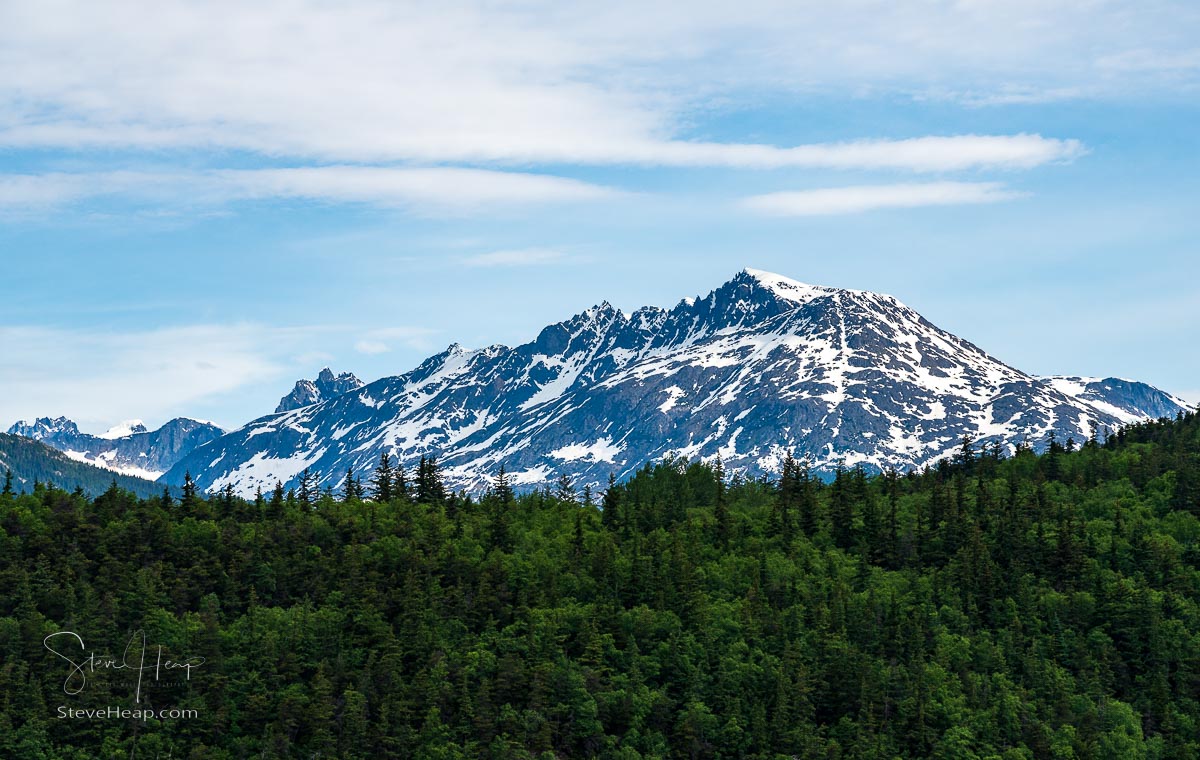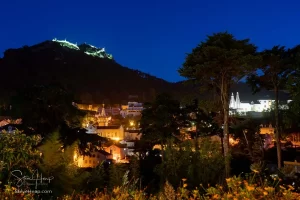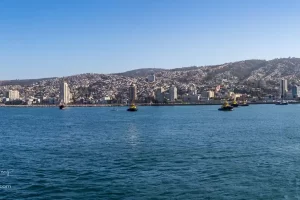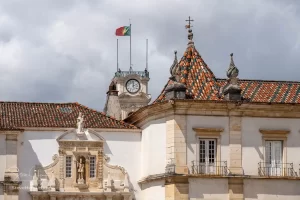We pulled into the small port of Skagway early in the morning on our Viking Orion cruise of Alaska and the weather was already sinking a little. I’m sure this was a mistake, but with a forecast of rain for much of the day, we decided against the popular narrow-gauge train ride up to the White Pass, thinking that the views in the mist and rain would not be worthwhile and it did rain all afternoon. But friends who took that tour were still very impressed. Oh, well!
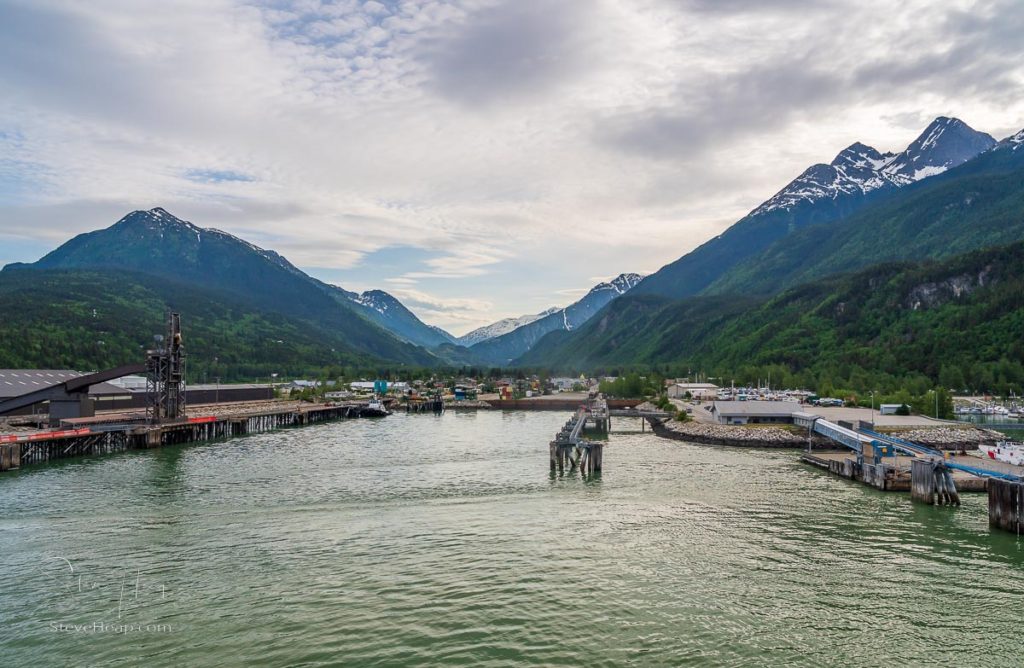
The town of Skagway seems to have been formed in 1887 when the pass over the mountains was completed. The early settlers thought that they would find gold in the mountains because the geology was similar to places around the world where gold had been found. So, in 1896 when gold was first found in the Klondike, in the Yukon area of Canada, Skagway became the main gateway to the area. Of course, those early miners got the lion’s share of the gold claims, but that didn’t stop thousands of people making the journey to make their fortune. Skagway in those days was a lawless town with Soapy Smith, a smooth conman leading the efforts to separate the new miners from what little money they had. We particularly liked the story of him setting up a telegram office to allow these thousands of arrivals to send a message home. Of course, the wires only went out of the back of the building and no farther. The Canadian government was worried that many people would die in the mountains without provisions, and so they insisted that everyone carry almost a ton (909kg) of food and equipment up the mountain and so the miners, with their pit ponies, made trip after trip up the steep mountain pass to get their supplies to the top. Thousands of horses died and were tossed into the ravine as the miners went back to buy new ones to continue their journey. All this is told in the National Park museum and visitor’s center as well as commemorated in statues around the town:
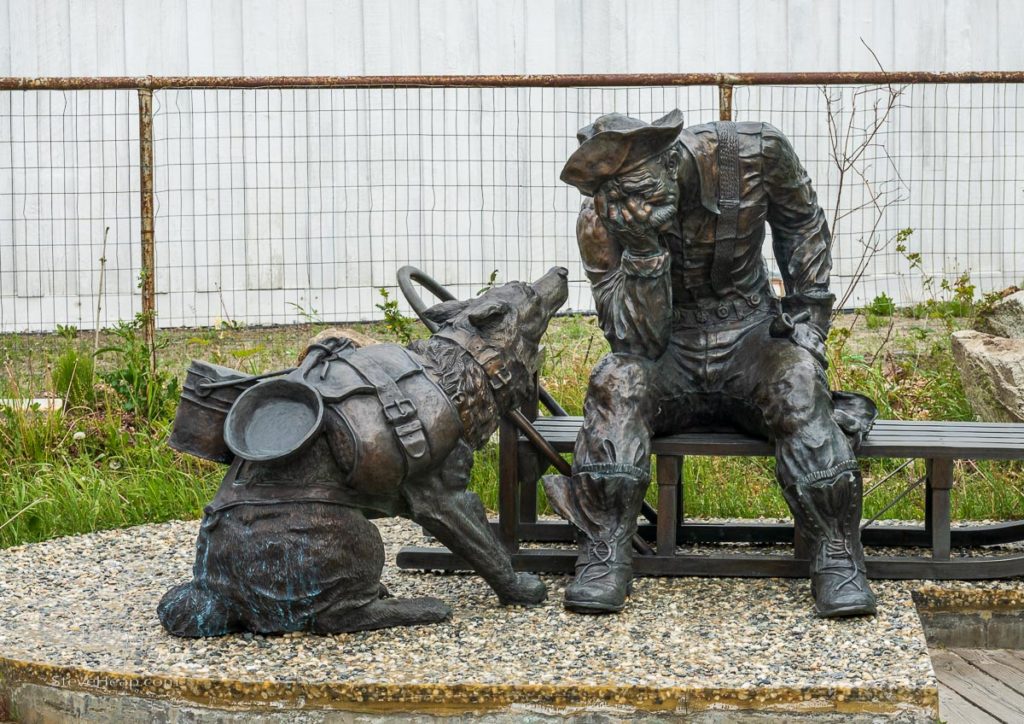
In 1898, a 14-mile steam driven aerial tramway was built up the pass to help miners get their provisions into the mountains. Later in 1898, a narrow-gauge railway was started to allow travel over the pass and something like 1000 miners a week passed through the town of almost 30,000 people as they sought their fortunes in the Yukon. And how long did this last? Just one more year! By 1899, it became clear that most of the gold was already owned by the early miners, and the town quickly slumped. The railway was finished in 1900 and by then, the gold rush was nearly over. Many of the buildings in early Skagway were preserved, including the cemetery that holds the bones of Soapy Smith who was killed in a gun fight, and so today, Skagway is a pleasant and interesting town just to stroll around.
The railway still operates of course, as a tourist attraction for the cruise ships that are able to reach its deep-water port:
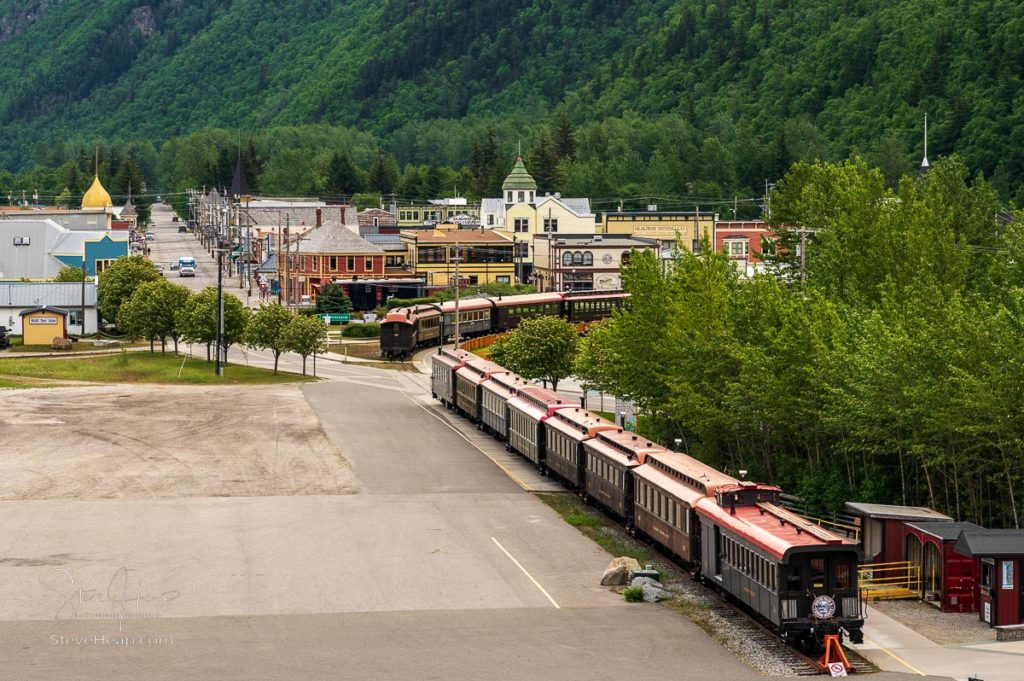
And the town has that old world charm, even though most of the buildings these days are shops and stores with tourist gifts by the thousand!
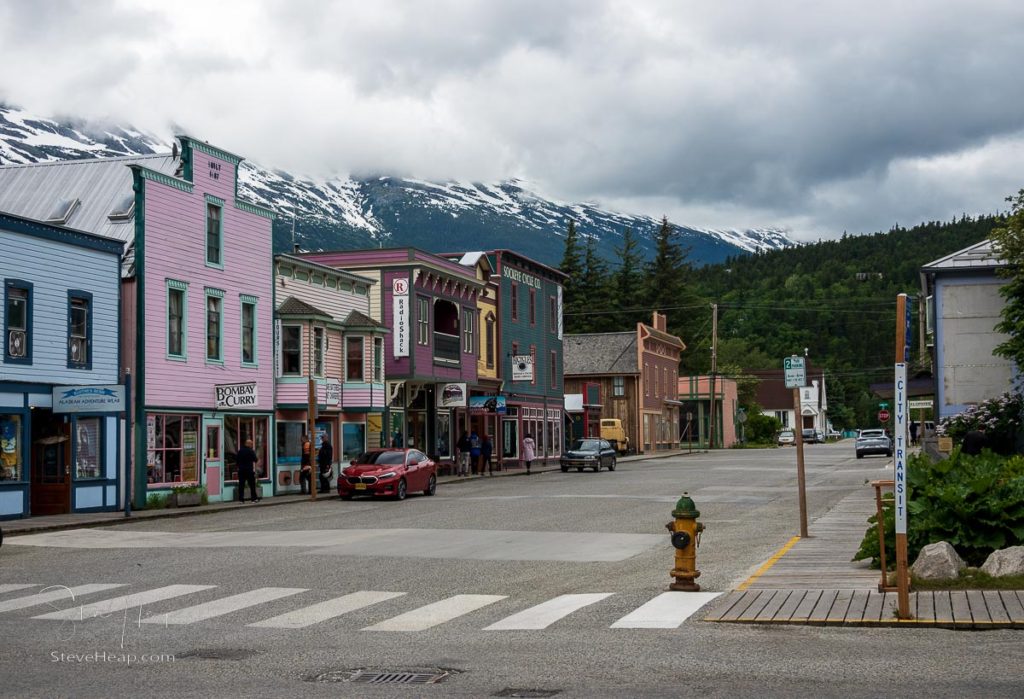
There is even a Radio Shack in town alongside the Bombay Curry house! Exhibits from the past are still preserved, including this powered snowplow that was attached to the front of the train to cut through the deep drifts over the pass:
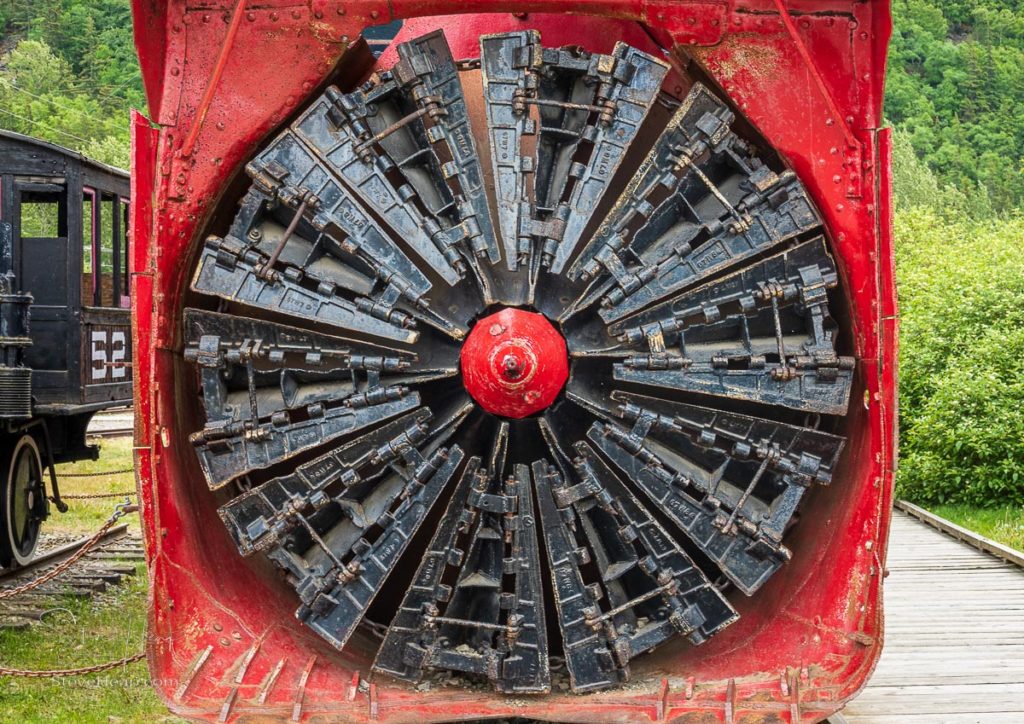
Camp Skagway No. 1 was the headquarters of the Arctic Brotherhood, a fraternal organization formed in 1899 for the gold miners to meet with others, and in 1900 it had over 10,000 members. The building is decorated with 8,800 bits of driftwood and is now the local visitor center:
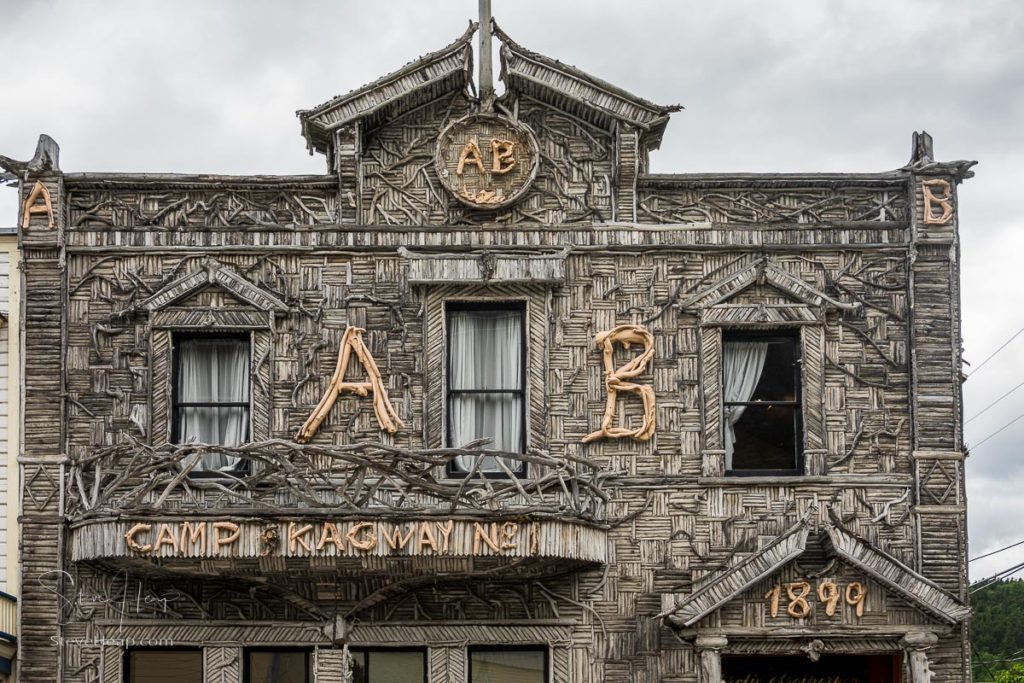
But with the rain clouds gathering, we left the town behind and made our way back to the ship for lunch and a relaxing afternoon!
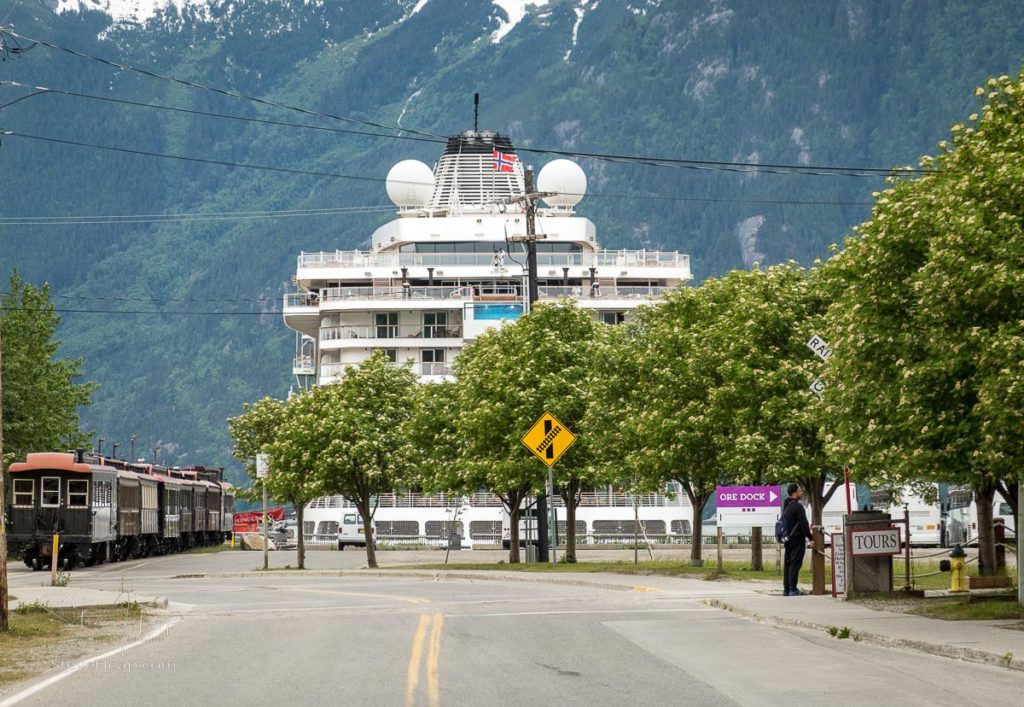
You can read the next installment of this series of articles tracing our cruise on the Viking Orion in early June of 2022. The next one is about our arrival in Icy Strait Point and the intriguing pier and canning factory there.
